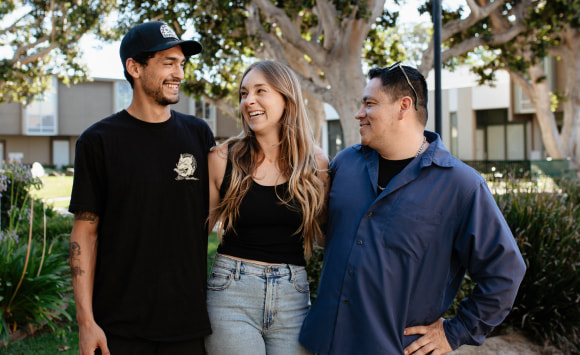Every year, International Survivors of Suicide Loss Day serves as a reminder of the lives touched by one of the most heartbreaking public health challenges of our time.
According to the Centers for Disease Control and Prevention (CDC), the provisional number of suicides in the United States reached approximately 49,000 deaths in 2023, a sobering reflection of how deeply suicide affects individuals, families, and communities.1
But how did this day begin, and why is it so meaningful for those who have lost someone to suicide?

Understanding International Survivors of Suicide Loss Day
This year, International Survivors of Suicide Loss Day will take place on Saturday, November 22, 2025, continuing its mission to support those who carry the deep impact of losing someone to suicide.
International Survivors of Suicide Loss Day is a time for people to come together, share their stories, and find understanding among others who have experienced the same kind of loss. It creates a safe space to break the silence surrounding suicide and encourages healing through compassion, connection, and community.
The History of International Survivors of Suicide Loss Day
International Survivors of Suicide Loss Day began with a personal story. In 1999, U.S. Senator Harry Reid, who had lost his father to suicide, introduced a resolution to the United States Senate to create a day for people affected by suicide loss. His goal was to give survivors a chance to come together, share their experiences, and find comfort and healing in each other’s support.
Also known as Survivor Day, it was officially designated by the United States Congress as a time for healing and connection among those who have lost loved ones to suicide. It was decided that the day would always take place on the Saturday before American Thanksgiving, recognizing that the holiday season can be especially hard for people coping with loss.
Since then, International Survivors of Suicide Loss Day has grown into a global event, with gatherings and support activities held around the world each year to honor those lost and bring hope to those who grieve.
The Power of Support After Suicide Loss
Losing someone to suicide is one of the most painful experiences a person can go through. The grief can feel heavy, confusing, and isolating. But support from friends, family, and community can make a real difference in helping survivors cope and heal.
Here’s why support matters and how it helps:
- It reminds survivors they’re not alone. Being around others who understand the same kind of loss offers comfort and reduces feelings of isolation.
- It helps make sense of emotions. Grief after suicide can bring guilt, anger, or unanswered questions. Talking to others or joining support groups helps people process these feelings safely.
- It breaks the silence and stigma. Sharing stories openly encourages understanding and reminds everyone that it’s okay to talk about suicide loss.
- It builds a path toward healing. Whether through conversation, therapy, or community events, support helps survivors take small steps forward, one day at a time.
- It creates hope. Through compassion and connection, survivors can begin to rebuild their lives and honor their loved ones in meaningful ways.
Support doesn’t erase the pain, but it makes the journey a little lighter and reminds survivors that healing is possible.
How to Get Involved and Show Support
There are many ways to take part in International Survivors of Suicide Loss Day and show care for those who are grieving. Getting involved helps build awareness, offers comfort, and reminds survivors that their loved ones are never forgotten.
Here are some meaningful ways to participate:
- Attend a local event. Many communities host gatherings where survivors can come together to share stories, listen to speakers, and find support in one another.
- Join a support group. Support groups (both in-person and online) create a safe space to talk about grief and healing with people who truly understand.
- Reach out to someone who’s grieving. A simple message, a phone call, or spending time together can mean more than you might think. Let them know they’re not alone.
- Share stories or messages of hope. Whether through social media, writing, or art, sharing experiences helps others feel seen and encourages open conversations about loss and healing.
- Volunteer or donate. Helping organizations that support suicide prevention and survivor care strengthens the network of compassion that survivors depend on.
The American Foundation for Suicide Prevention (AFSP) plays a key role in this movement. In addition to sponsoring in-person events around the world for International Survivors of Suicide Loss Day, AFSP also hosts two virtual gatherings: Survivor Day Live and Día De Esperanza, so people everywhere can connect, heal, and find hope together.
Extending Compassion Beyond the Day
Grief doesn’t end after International Survivors of Suicide Loss Day. Healing takes time, and ongoing support is often what helps people move forward. Compassion after suicide loss means continuing to listen, offer help, and encourage care long after the day of remembrance has passed.
Both Oceanrock Health and South Coast Counseling provide caring and professional mental health services for individuals and families coping with loss. Their teams offer:
- Grief recovery support – helping survivors process emotions and find healthy ways to heal.
- Individual and family therapy – creating a safe space to talk about pain, guilt, or unanswered questions.
- Crisis and mental health counseling – offering guidance for those struggling with depression, trauma, or suicidal thoughts.
- Community-centered care – encouraging survivors to connect with others who understand what they’re going through.
If you or someone you know is thinking about suicide or is in emotional distress, help is available:
- In the United States, call or text 988 to reach the Suicide and Crisis Lifeline.
- If you’re outside these regions, you can find international hotlines at findahelpline.com.
No one should face loss or despair alone. Compassion, care, and connection every day of the year can make the difference between pain and healing.

Source:
- CDC. (2024). New CDC Report Shows Suicide Risk Tied to Local Economic and Social Conditions. CDC Newsroom. https://www.cdc.gov/media/releases/2024/s0910-vs-suicide-risk.html







